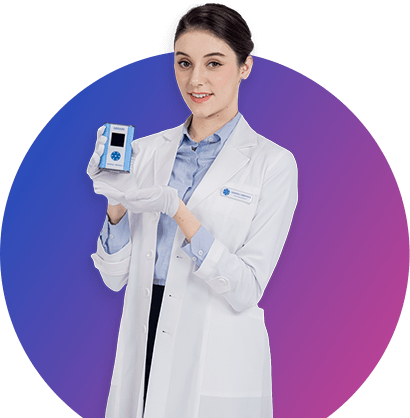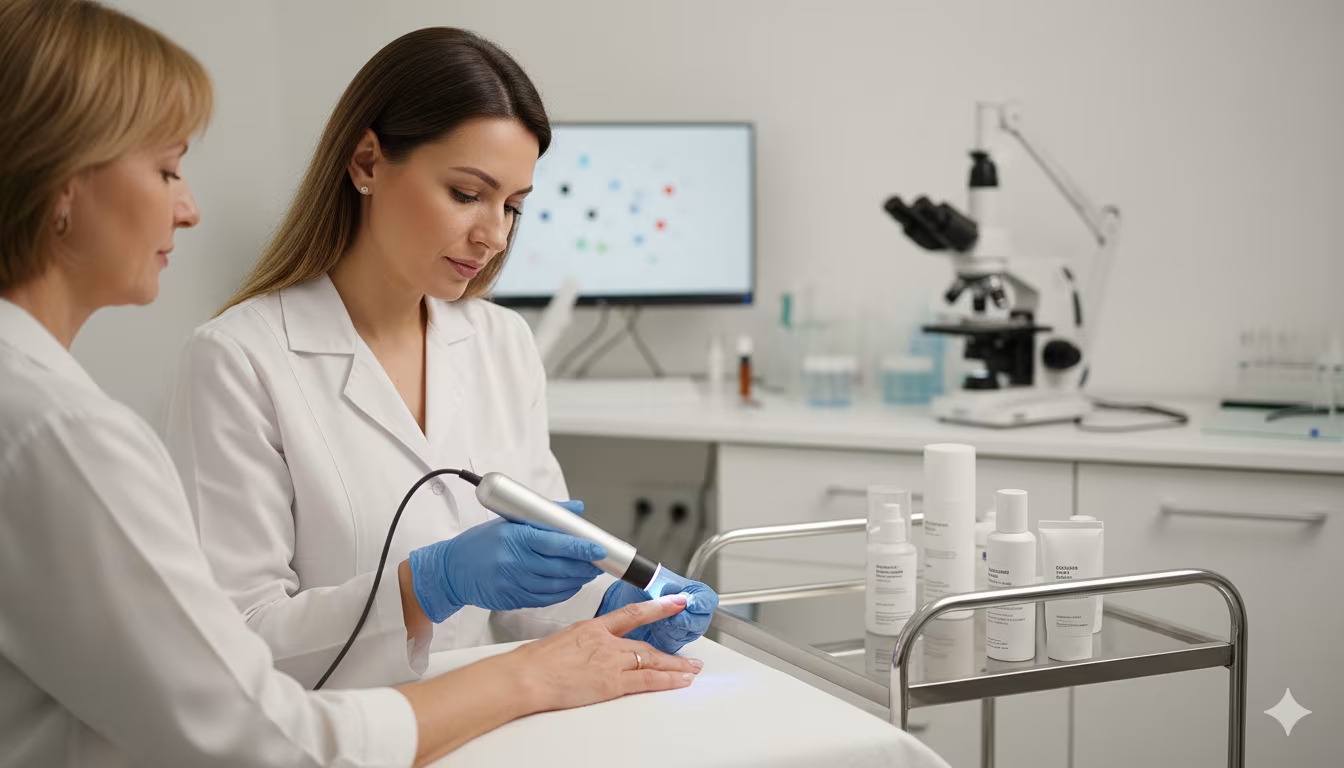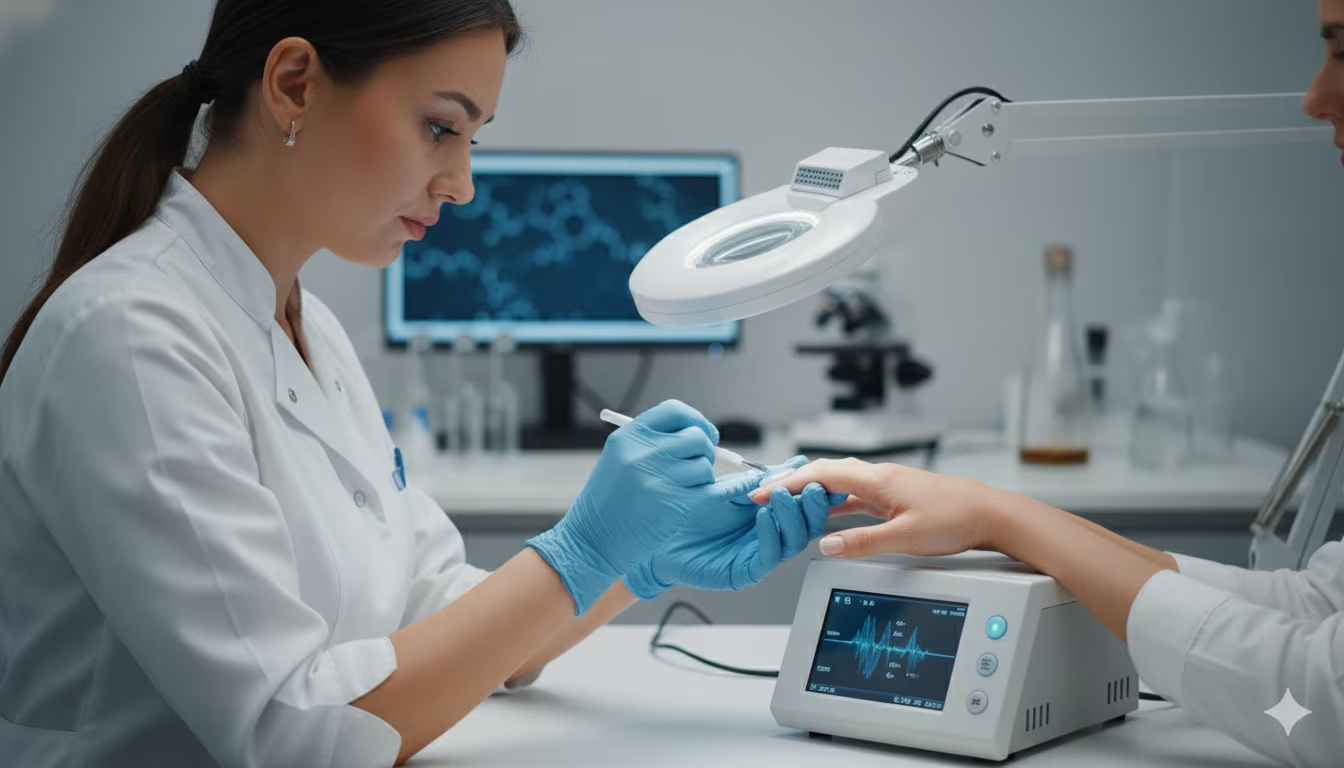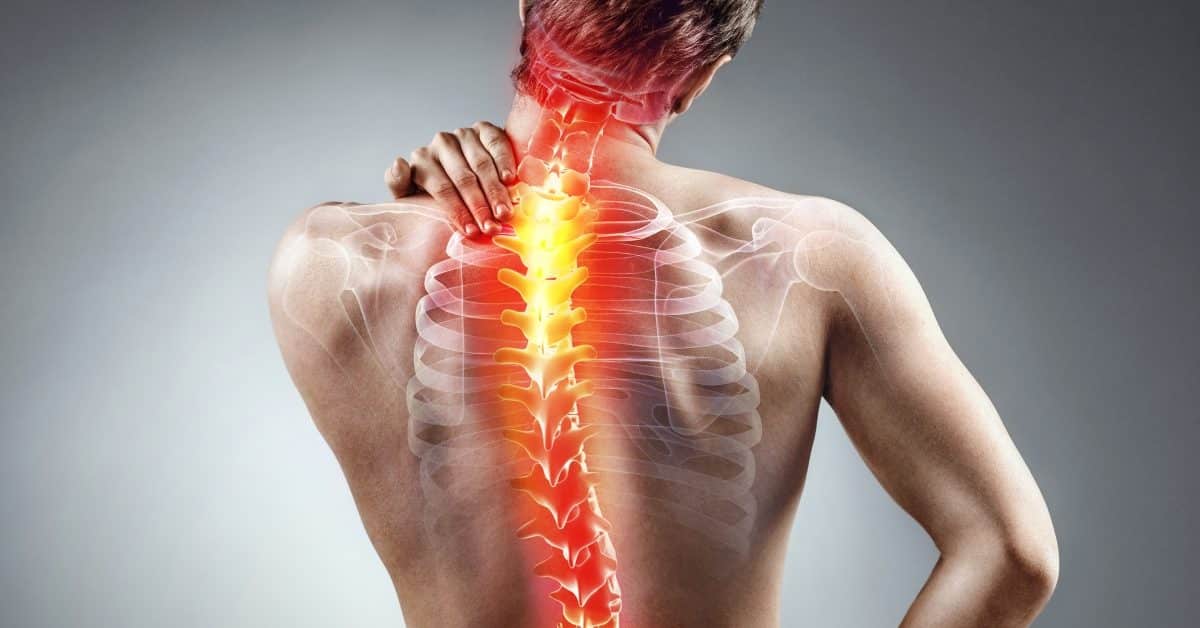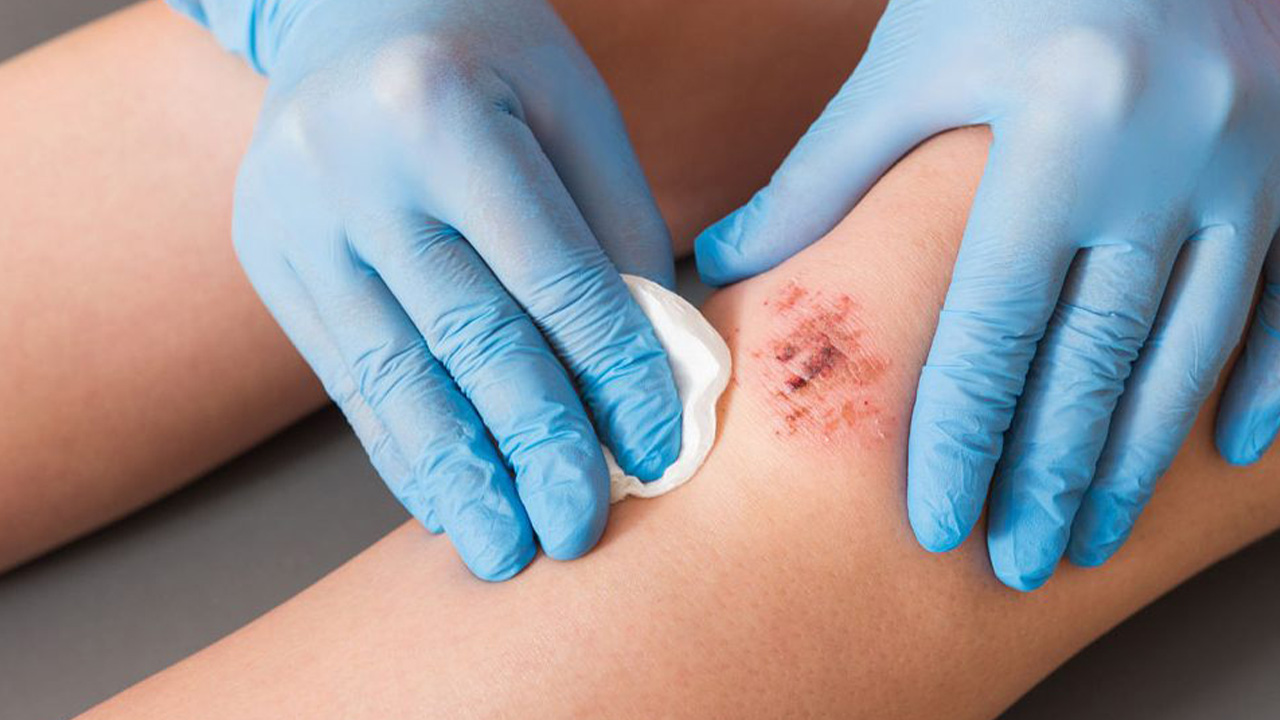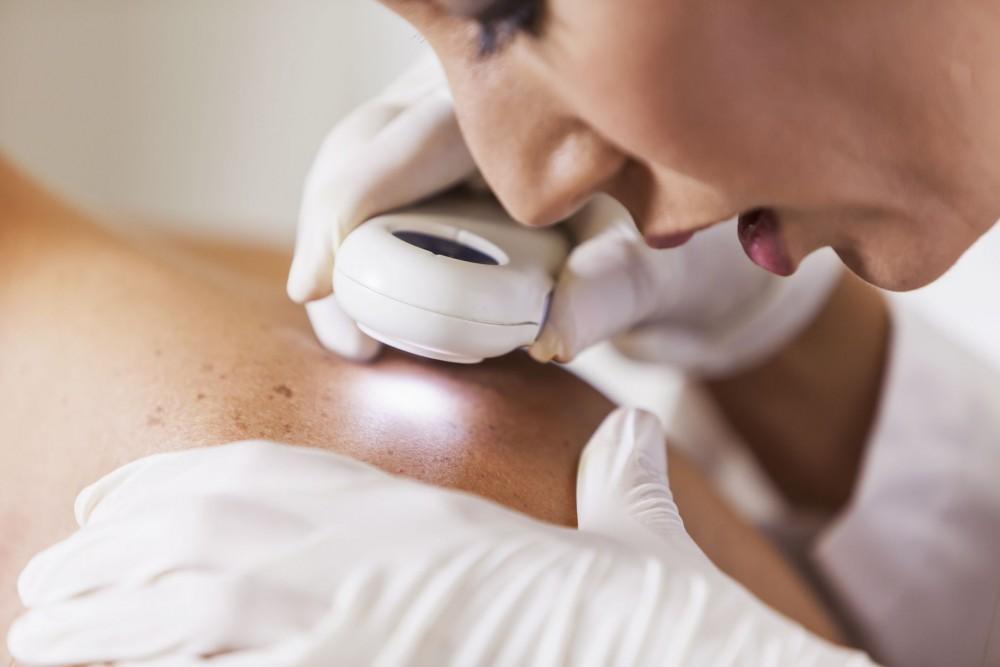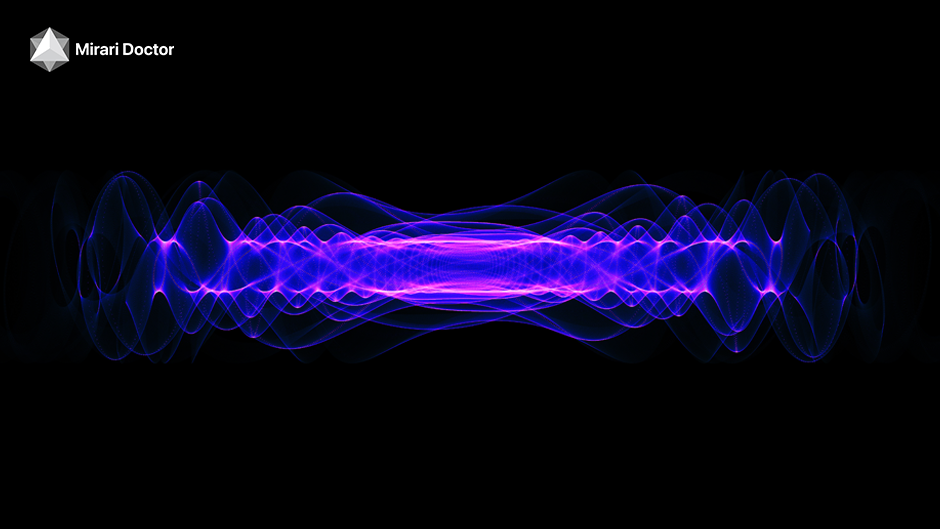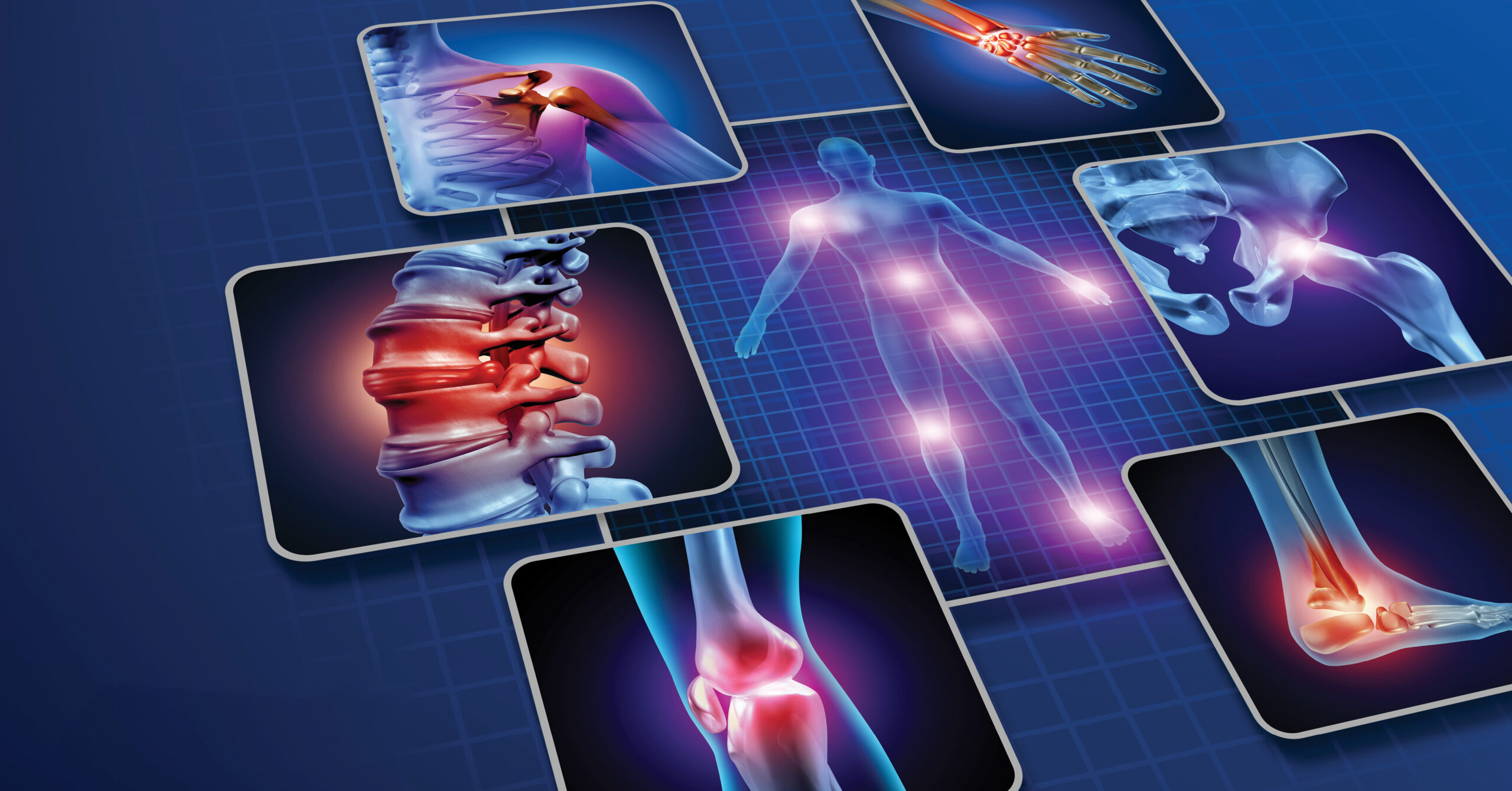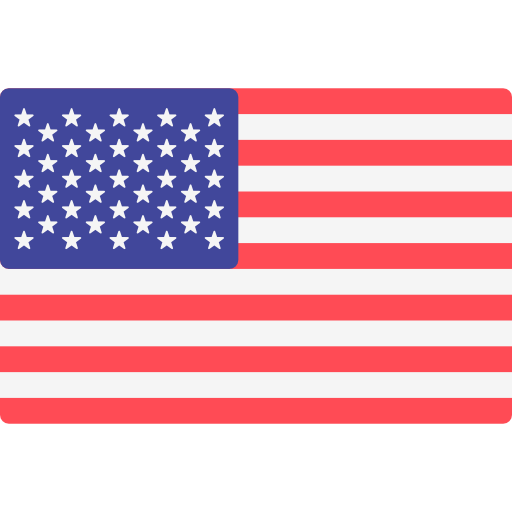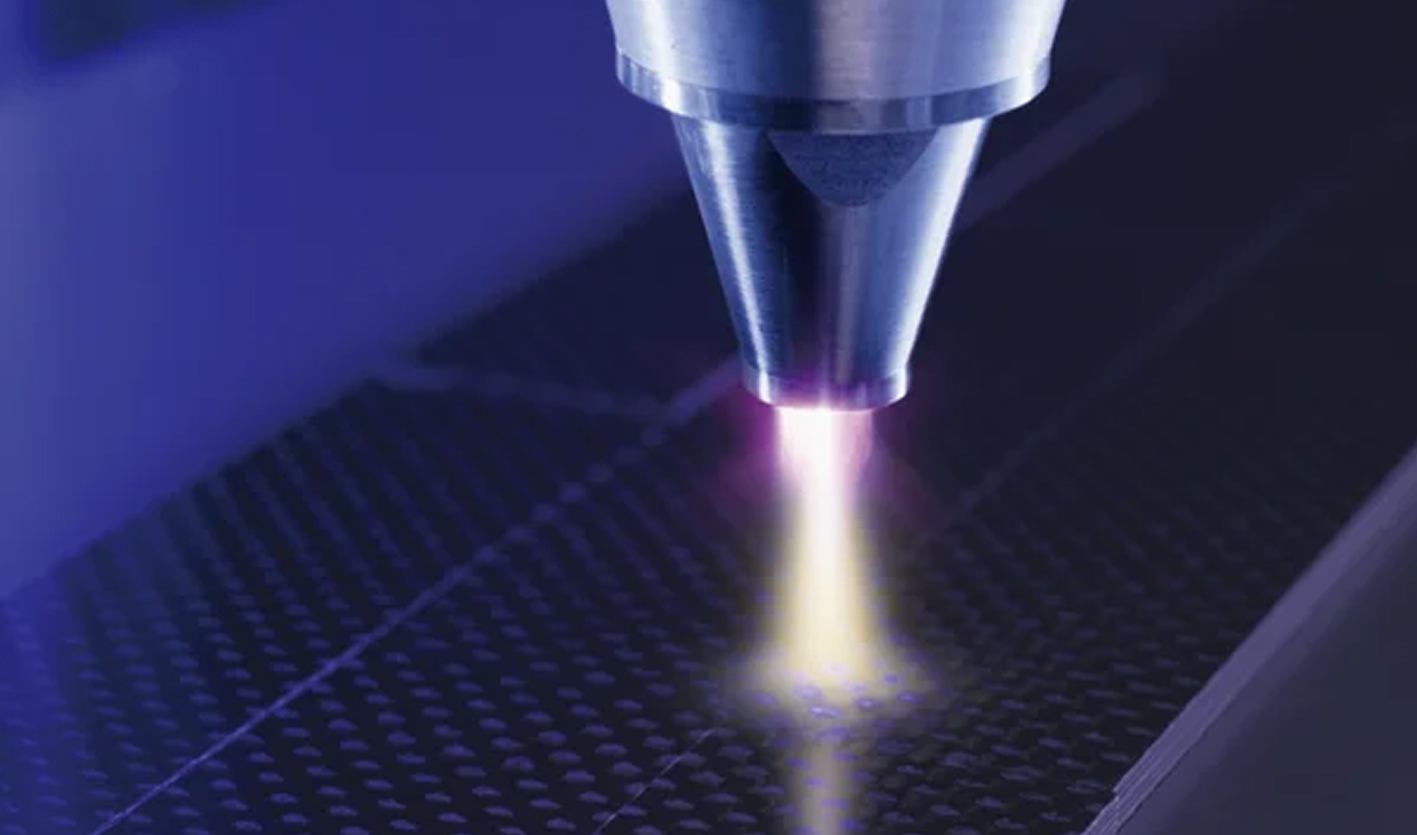
You May Be Interested In:
- Mirari Cold Plasma vs Other Plasma Technologies: A Comprehensive Medical Comparison
- How Is Cold Plasma Produced? Complete Guide to Medical Cold Plasma Generation Technology
- Difference Between Cold Plasma and Hot Plasma: Complete Medical Guide for Healthcare Applications
- Best Cold Plasma Device: Complete Guide to Choosing the Right Medical-Grade Technology
- Cold Plasma Treatment: Clinical Guide
Atmospheric pressure plasma is ionized gas generated at ambient atmospheric pressure (760 Torr) without vacuum systems, representing the fourth state of matter that operates through electrical discharges like corona, dielectric barrier discharge (DBD), or gliding arc configurations[1]. This non-thermal technology maintains electron temperatures exceeding 10,000K while keeping gas temperatures at 35-40°C, making it safe for medical applications, industrial surface treatment, and environmental processing[2]. The technology eliminates expensive vacuum equipment, enables continuous inline processing, and operates with ambient air—advantages driving market growth from $3.34 billion (2025) to $11.14 billion (2034) at 14.35% CAGR[3].
Key applications span wound healing (92% complete healing vs 32% standard care), sterilization, cancer therapy, surface activation, and water purification. FDA-cleared devices like the MIRARI Cold Plasma System demonstrate clinical efficacy with minimal adverse events.
What Is Atmospheric Pressure Plasma?
Definition and Fundamental Science
Atmospheric pressure plasma represents a revolutionary state of matter generated at normal atmospheric pressure—approximately 760 Torr or 1 atmosphere—eliminating the need for costly vacuum systems that constrain traditional plasma technologies[1]. This ionized gas achieves partial ionization through controlled electrical discharges including corona discharge, dielectric barrier discharge (DBD), and gliding arc configurations. The technology produces energetic electrons and ions while maintaining bulk gas temperatures suitable for direct material contact.
The fundamental advantage lies in operating at ambient pressure conditions. Unlike low-pressure plasma requiring 0.01-1 Torr vacuum environments, atmospheric pressure systems integrate directly into production lines and clinical settings. This accessibility transforms plasma from a specialized laboratory tool into a practical technology for manufacturing, healthcare, and environmental applications.
Key generation mechanisms include:
- Corona discharge creating localized high electric field ionization
- Dielectric barrier discharge preventing arc formation through insulating materials
- Gliding arc producing moving plasma between diverging electrodes
- Microwave-induced plasma using electromagnetic energy without electrodes
- Plasma jets directing ionized gas streams for precise treatment
The partial ionization process converts a small fraction—typically 0.01% to 1%—of gas molecules into reactive species. This creates a complex chemical environment containing electrons, ions, radicals, and UV photons that drive therapeutic and industrial effects.
How Atmospheric Pressure Plasma Works
The operational principle begins with ionization when high voltage (typically 5-30 kV) applies to electrodes, creating electrical discharge that strips electrons from gas molecules[4]. This gas breakdown transforms stable molecules into highly reactive plasma components.
The process unfolds through specific stages:
Ionization Phase: Applied voltage exceeds the breakdown threshold for atmospheric air, argon, helium, or other working gases. The resulting electric field accelerates free electrons to sufficient energy levels for impact ionization.
Reactive Species Generation: Energetic electrons collide with surrounding gas molecules, creating short-lived but highly reactive chemical species. These include hydroxyl radicals (OH), atomic oxygen (O), hydrogen (H), and nitric oxide (NO). The species persist for microseconds to milliseconds, sufficient for surface interaction but limiting bulk penetration[5].
Surface Interaction: Reactive radicals reaching material surfaces initiate chemical modifications through oxidation, reduction, or crosslinking reactions. The species modify surface chemistry, remove organic contaminants, or deposit functional coatings depending on plasma parameters and exposure duration.
Non-Thermal Operation: Despite electron temperatures exceeding 10,000K (approximately 1 eV), the bulk gas remains at 35-40°C. This non-equilibrium state—characteristic of cold atmospheric pressure plasma—enables treatment of heat-sensitive materials including living tissue, polymers, and temperature-critical substrates.
One pioneering medical device applying this technology is the Mirari Cold Plasma, developed by General Vibronics and commercialized by Mirari Doctor. The system integrates 80 kHz monopolar radiofrequency with atmospheric pressure plasma for enhanced therapeutic effects in wound care, dermatology, and pain management applications[6].
Key Characteristics and Advantages
Atmospheric pressure plasma technology delivers multiple operational advantages over conventional vacuum-based systems, fundamentally changing plasma accessibility and application scope[7].
Operational Benefits:
- No vacuum equipment required: Eliminates pumps, chambers, and sealing systems reducing capital costs by 40-60%
- Continuous inline processing: Direct integration into production lines without batch processing delays
- Ambient air operation: Uses atmospheric gases eliminating expensive noble gas requirements for many applications
- Scalability: Treatment of large surfaces and complex geometries without size constraints
- Real-time processing: Immediate treatment enabling just-in-time manufacturing integration
- Energy efficiency: Lower power consumption compared to vacuum plasma systems
The cost-effectiveness stems from infrastructure simplification. Vacuum systems require significant floor space, routine maintenance, and specialized operators. Atmospheric pressure alternatives operate with standard electrical power, compressed air, and minimal footprint—advantages particularly valuable for medical facilities and smaller manufacturers.
Environmental sustainability represents another key advantage. The technology uses no hazardous chemicals, generates minimal waste, and operates at low temperatures. For medical applications, this translates to safe, non-toxic sterilization and treatment modalities. Industrial users benefit from eliminating solvent-based cleaning and chemical surface treatments.
Types of Atmospheric Pressure Plasma Systems
Understanding different plasma generation configurations helps select appropriate technology for specific applications. Each system type offers distinct advantages regarding uniformity, control, and application suitability.
| System Type | Generation Method | Key Advantages | Primary Applications |
|---|---|---|---|
| Corona Discharge | Point-to-plane high field gradient | Simple, low cost, continuous operation | Film treatment, printing, packaging |
| Dielectric Barrier Discharge (DBD) | AC voltage across dielectric insulator | Uniform treatment, scalable, prevents arcing | Surface activation, industrial coating |
| Plasma Jet (APPJ) | Directed ionized gas stream | Precise spatial control, localized treatment | Medical therapy, precision manufacturing |
| Gliding Arc | Moving arc between diverging electrodes | High energy efficiency, gas conversion | Chemical synthesis, fuel reforming |
| Microwave Plasma | Electromagnetic energy (2.45 GHz) | Electrode-free, high quality plasma | Material deposition, synthesis |
Corona discharge systems employ pointed electrodes creating intense local electric fields. The simplicity enables cost-effective surface treatment but limits penetration depth and uniformity. Common applications include web treatment for printing and packaging industries where continuous processing of moving substrates is required.
Dielectric barrier discharge represents the most widely deployed atmospheric pressure plasma configuration. AC voltage (1-100 kHz) applied across electrodes separated by dielectric material (glass, ceramics) creates uniform microdischarges. The insulating layer prevents transition to arc discharge, maintaining stable non-thermal plasma. DBD systems excel at treating flat surfaces and operate at atmospheric pressure with air or oxygen, making them environmentally friendly and cost-effective.
Atmospheric pressure plasma jets direct ionized gas streams for targeted applications. Noble gases (helium, argon) or air flow through discharge regions, creating plasma plumes extending 1-10 cm from nozzle openings. Jets provide precise spatial control essential for medical applications where selective tissue treatment is required. The atmospheric pressure plasma jet configuration in MIRARI systems enables localized wound treatment and surgical applications[6].
Atmospheric Pressure Plasma vs Low Pressure Plasma
Fundamental Differences
The distinction between atmospheric and low-pressure plasma systems fundamentally impacts equipment requirements, operating costs, and application feasibility. Understanding these differences guides technology selection for specific use cases[8].
- Pressure Requirements: Atmospheric pressure plasma operates at 760 Torr (1 atmosphere), matching ambient conditions. Low-pressure plasma requires vacuum chambers maintaining 0.01-1 Torr—approximately one-thousandth to one ten-thousandth of atmospheric pressure. This pressure differential necessitates vacuum pumps, sealed chambers, and specialized infrastructure.
- Equipment Complexity: AP systems integrate power supplies, electrodes, and gas delivery into compact configurations. LP systems add vacuum pumps (rotary vane, turbomolecular), pressure control systems, chamber sealing mechanisms, and pressure monitoring equipment. The additional components increase initial investment, maintenance requirements, and operational complexity.
- Operating Costs: Atmospheric pressure configurations consume 30-50% less energy than equivalent low-pressure systems. Vacuum pumps represent significant ongoing electrical loads. Maintenance costs favor AP systems—no pump oil changes, seal replacements, or vacuum leak troubleshooting. However, LP systems may consume less process gas due to efficient containment.
- Processing Mode: AP plasma enables continuous inline treatment of moving substrates—essential for roll-to-roll processing and production line integration. LP systems operate in batch mode, requiring load/pump-down/treatment/vent cycles limiting throughput. For medical applications, AP systems provide point-of-care treatment while LP systems remain confined to centralized facilities.
- Treatment Uniformity: LP plasma achieves superior uniformity across complex three-dimensional geometries. The contained environment and longer plasma residence times ensure complete coverage. AP plasma provides localized treatment, advantageous for targeted applications but requiring precise positioning for uniform results.
Performance Comparison
Quantitative performance parameters reveal operational distinctions between atmospheric and low-pressure plasma technologies, informing application-specific decisions.
| Parameter | Atmospheric Pressure Plasma | Low Pressure Plasma |
|---|---|---|
| Gas Temperature | 40-100°C | 20-50°C |
| Electron Density | 10^10-10^12 cm^-3 | 10^9-10^11 cm^-3 |
| Electron Energy | 1-10 eV | 1-5 eV |
| Reactive Species Concentration | High (10^15-10^16 cm^-3) | Moderate (10^13-10^15 cm^-3) |
| Treatment Depth | 1-100 µm surface | 1-1000 µm penetration |
| Processing Speed | Fast (seconds-minutes) | Moderate (minutes-hours) |
| Equipment Footprint | Compact (1-5 m²) | Large (10-50 m²) |
These performance differences drive application selection. Atmospheric pressure plasma excels at rapid surface treatment, medical applications requiring portability, and industrial processes needing continuous operation. Low-pressure plasma suits precision applications demanding deep modification, ultra-clean environments, and maximum uniformity.
Application-Specific Advantages
Selecting between atmospheric and low-pressure plasma requires matching technology characteristics to application requirements and operational constraints.
Choose Atmospheric Pressure Plasma When:
- Continuous inline processing required for production efficiency
- Large surface area treatment needed (vehicles, building materials, medical equipment)
- Point-of-care medical applications demanding portability
- Lower capital investment available ($50K-$500K range)
- Rapid treatment essential (seconds to minutes)
- Easy facility integration without major infrastructure modifications
Choose Low Pressure Plasma When:
- Maximum treatment uniformity critical (semiconductor processing, precision optics)
- Deep material modification required (>100 µm penetration)
- Ultra-clean processing environment essential (contamination-sensitive applications)
- Complex three-dimensional geometries need treatment
- Batch processing acceptable for production workflow
- Higher capital investment available ($200K-$2M+ range)
For medical wound healing applications, atmospheric pressure plasma demonstrates clear advantages. The technology treats chronic wounds achieving 92% complete healing versus 32% with standard care[2]. Portable systems enable bedside treatment, while non-thermal operation (<43°C) ensures patient comfort. Studies show 93.6% of patients report painless treatment during atmospheric pressure plasma therapy[5].
Industrial surface treatment favors atmospheric pressure systems for adhesion promotion, cleaning, and activation applications. Roll-to-roll processing of films, textiles, and packaging materials requires continuous operation impossible with vacuum chambers. Integration into existing production lines proceeds with minimal disruption.
Medical and Biomedical Applications
Wound Healing and Tissue Regeneration
Atmospheric pressure plasma revolutionizes chronic wound management through simultaneous antimicrobial action and tissue regeneration stimulation. Clinical evidence demonstrates superior outcomes compared to conventional therapies[2].
Clinical Efficacy Data: Randomized controlled trials establish atmospheric pressure plasma as highly effective for chronic wound treatment. Studies report 92% complete healing rates with plasma therapy versus 32% with standard care alone. Treatment accelerates healing by 40-60% while reducing bacterial load by 99.9% within 2-5 minutes of application[2].
Antimicrobial Mechanisms: Reactive oxygen and nitrogen species (RONS) generated by plasma disrupt bacterial membranes, damage DNA, and oxidize essential proteins. The multi-target approach prevents resistance development—a critical advantage over antibiotics. Plasma effectively eliminates drug-resistant organisms including MRSA (methicillin-resistant Staphylococcus aureus) and VRE (vancomycin-resistant Enterococcus) without chemical residues.
Tissue Regeneration Pathways: Beyond antimicrobial effects, atmospheric pressure plasma stimulates healing through:
- Fibroblast activation increasing collagen synthesis (Types I and III)
- Angiogenesis promotion via VEGF (vascular endothelial growth factor) upregulation
- Keratinocyte migration acceleration for re-epithelialization
- Matrix metalloproteinase regulation optimizing extracellular matrix remodeling
- Pro-inflammatory cytokine modulation (TNF-α, IL-6, IL-1β reduction)
FDA-Cleared Devices: The MIRARI Cold Plasma System received FDA 510(k) clearance in November 2024 (K242553) as a Class II medical device for cutting, coagulation, and soft tissue treatment[6]. Treatment protocols specify 15-minute maximum sessions with 30-minute minimum intervals between consecutive treatments. The system’s dual CAP (Cold Atmospheric Plasma) and RES (Resistive Energy System) modalities enable treatment of both superficial and deep tissue structures.
Diabetic foot ulcers represent a particularly challenging indication where atmospheric pressure plasma demonstrates substantial clinical benefit. Five-year survival improvement and amputation risk reduction make the technology valuable for this high-risk patient population. Learn more about wound healing applications and protocols.
Blood Coagulation Applications
Atmospheric pressure plasma facilitates rapid hemostasis through protein denaturation and crosslinking mechanisms distinct from thermal coagulation[1]. The technology stops oozing blood faster than natural coagulation processes, proving especially valuable during surgical procedures.
Plasma treatment forms eosinophilic fibrous membrane-like structures different from erythrocyte-containing clots produced by natural coagulation. Electron microscopic analyses reveal preserved cellular architecture in plasma-treated tissue versus fragmented structures seen with electrocoagulation. The inflammatory response following plasma treatment measures significantly lower than thermal coagulation, promoting faster healing and reduced complications[1].
Cancer Therapy and Oncology
Selective tumor cell targeting represents an emerging atmospheric pressure plasma application showing promise in clinical oncology. Plasma induces apoptosis in malignant cells through oxidative stress while preserving healthy tissue—a therapeutic window exploited for cancer treatment[1].
Plasma-Activated Medium (PAM): Solutions irradiated with atmospheric pressure plasma acquire anti-cancer properties lasting hours to days. PAM kills glioblastoma, ovarian, and gastric cancer cells through ROS generation and apoptosis induction. Clinical trials explore intrathecal and intraperitoneal PAM injection for peritoneal dissemination treatment[1].
The Canady Helios Cold Plasma Scalpel received FDA approval for surgical oncology applications, demonstrating regulatory acceptance of plasma-based cancer therapy. Ongoing clinical trials investigate atmospheric pressure plasma for various malignancies including skin cancer, melanoma, and solid tumors.
Sterilization and Disinfection
Atmospheric pressure plasma provides rapid, chemical-free sterilization suitable for medical devices, instruments, and surfaces. The technology inactivates bacteria, viruses, fungi, and spores through oxidative damage to cellular components. Processing times range from seconds to minutes depending on contamination levels and surface geometry.
Heat-sensitive materials tolerate plasma sterilization due to non-thermal operation maintaining surface temperatures below 43°C. This compatibility extends plasma applications to plastic devices, electronics, and tissue-engineered constructs damaged by autoclaving. The absence of toxic residues eliminates aeration periods required for ethylene oxide sterilization.
Dermatology and Skin Treatment
Dermatological applications leverage atmospheric pressure plasma’s antimicrobial and regenerative properties for inflammatory skin conditions and aesthetic treatments. Clinical studies document statistically significant improvements across multiple indications.
- Acne Treatment: Plasma achieves 99.9% Propionibacterium acnes elimination while regulating sebum production. Patients experience reduced inflammatory lesions after 4-6 treatment sessions performed 2-3 times weekly. The technology avoids antibiotic resistance concerns and systemic side effects associated with oral medications.
- Anti-Aging Applications: Atmospheric pressure plasma stimulates collagen production (Types I and III), reduces wrinkles, and improves skin texture through enhanced fibroblast activity. The technology increases epidermal permeability by 24%, enhancing absorption of complementary skincare products. Patients see visible improvements within 1-2 sessions with maintenance treatments quarterly[5].
Industrial Applications and Surface Treatment
Surface Cleaning and Decontamination
Atmospheric pressure plasma removes organic contaminants from surfaces without solvents or chemicals, offering environmentally sustainable cleaning for manufacturing applications. Reactive species oxidize oils, greases, and organic residues to volatile compounds eliminated through ventilation. The dry cleaning process avoids drying delays and wastewater generation associated with wet chemical methods.
Pre-treatment cleaning prepares surfaces for bonding, coating, and printing operations where contamination causes adhesion failure. Industries including aerospace, automotive, electronics, and medical device manufacturing adopt plasma cleaning for critical applications requiring ultra-clean surfaces.
Surface Activation for Adhesion
Atmospheric pressure plasma modifies surface chemistry and energy to improve wettability and adhesion. The treatment introduces polar functional groups (hydroxyl, carbonyl, carboxyl) to hydrophobic materials like polyethylene, polypropylene, and PTFE. Surface energy increases from 30-40 dyne/cm to 60-70 dyne/cm, dramatically improving ink adhesion, paint bonding, and coating performance.
Textile treatment enables improved dyeing and printing results. Plastic surface activation eliminates primers and adhesion promoters, reducing process steps and chemical usage. The effects persist for hours to weeks depending on material and storage conditions, timing activation near subsequent processing steps.
Plasma Polymerization and Coating Deposition
Atmospheric pressure plasma-enhanced chemical vapor deposition (AP-PECVD) deposits thin functional coatings without vacuum equipment. The technology creates hydrophobic coatings (water repellency), hydrophilic surfaces (improved wetting), antimicrobial films (infection prevention), and barrier layers (packaging protection).
Silicon-based, polymer-based, and hybrid coatings deposit at rates of 1-100 nm/second depending on precursor chemistry and plasma parameters. Applications span food packaging (barrier enhancement), medical devices (biocompatibility), electronics (protective coatings), and textiles (functional finishes).
Safety Considerations and Regulatory Compliance
Safety Profile of Atmospheric Pressure Plasma
Atmospheric pressure plasma demonstrates excellent safety profiles across medical and industrial applications when properly implemented[5]. The non-thermal operation maintaining surface temperatures below 43°C prevents thermal injury to tissues and heat-sensitive materials.
Safety Parameters:
- Ozone generation monitoring (<0.05 ppm FDA limit for medical devices)
- UV radiation exposure (primarily safe UV-A spectrum 310-470nm)
- Electromagnetic field considerations (IEC 60601-1-2 compliance)
- Ventilation requirements for reactive species management
- Temperature monitoring preventing excessive heating
Clinical data from thousands of patient treatments report minimal adverse events. Studies document 93.6% of patients experience painless treatment with only mild, temporary side effects (transient redness, slight warmth) in rare cases[5]. Long-term follow-up spanning 5+ years identifies no significant safety risks, carcinogenic potential, or permanent tissue damage with proper protocols.
Regulatory Standards and Certification
Medical atmospheric pressure plasma devices require FDA 510(k) clearance as Class II medical devices in the United States. European markets mandate CE marking under the Medical Device Regulation (MDR). Compliance requires demonstrating substantial equivalence to predicate devices, providing performance testing, and establishing quality management systems[6].
Key Standards:
- IEC 60601-1: Electrical safety for medical electrical equipment
- IEC 60601-1-2: Electromagnetic compatibility requirements
- IEC 60601-2-2: High-frequency surgical equipment particular requirements
- ISO 13485: Quality management systems for medical devices
- IEC 62304: Medical device software lifecycle processes
Industrial atmospheric pressure plasma equipment follows different regulatory pathways focusing on occupational safety, electromagnetic compatibility, and environmental compliance. Manufacturers implement ISO 9001 quality management and CE marking for European markets.
Market Trends and Future Development
Market Size and Growth Projections
The global atmospheric pressure plasma market demonstrates robust growth driven by medical applications, industrial automation, and environmental sustainability demands[3]. Market analysts project expansion from $3.34 billion (2025) to $11.14 billion (2034) representing 14.35% compound annual growth rate (CAGR).
Medical applications drive significant market expansion as clinical evidence accumulates and FDA clearances increase. Wound care alone represents a multi-billion dollar opportunity with 140 million global chronic wound patients. Industrial surface treatment adoption accelerates as manufacturers seek environmentally sustainable alternatives to chemical processes.
Asia-Pacific emerges as the fastest-growing region with expanding manufacturing capacity, increasing healthcare investment, and rising environmental regulations. China, Japan, and South Korea lead atmospheric pressure plasma adoption for electronics, automotive, and medical applications.
Technological Innovations
Next-generation atmospheric pressure plasma systems incorporate artificial intelligence, real-time monitoring, and miniaturization enabling new applications and improved performance[7].
- AI-Guided Optimization: Machine learning algorithms analyze plasma parameters, treatment outcomes, and material responses to optimize process settings automatically. Adaptive control systems adjust voltage, frequency, gas flow, and treatment duration based on real-time feedback, improving consistency and outcomes.
- Portable Battery-Operated Devices: Battery-powered atmospheric pressure plasma units enable field deployment for military medicine, emergency response, and point-of-care applications. The MIRARI system evolution demonstrates capacity increases from 240 minutes to 1200 minutes across five generations[6].
- Multi-Modal Integration: Hybrid systems combining atmospheric pressure plasma with radiofrequency energy, ultrasound, or laser therapy provide synergistic therapeutic effects. The MIRARI Cold Plasma System integrates 80 kHz monopolar radiofrequency with plasma generation for enhanced tissue penetration and treatment versatility.
Emerging Applications
Research frontiers expand atmospheric pressure plasma beyond established applications into novel therapeutic and industrial domains.
- Plasma-Activated Solutions: Water, buffers, and culture media irradiated with plasma acquire biological activity lasting hours to days. These solutions enable indirect treatment avoiding direct plasma exposure—valuable for internal organ therapy and agricultural applications[1].
- Nanomaterial Synthesis: Atmospheric pressure plasma produces nanoparticles and nanostructured coatings without vacuum equipment or high-temperature processing. Applications include catalysts, sensors, and advanced materials.
- Battery Technology: Electrode surface treatment with atmospheric pressure plasma improves lithium-ion battery performance through enhanced wettability and charge transfer. The technology aids solid-state battery development addressing key manufacturing challenges.
Key Takeaways
- Atmospheric pressure plasma operates at ambient pressure eliminating vacuum equipment, reducing costs 40-60%, and enabling continuous inline processing impossible with traditional plasma systems.
- Medical applications achieve 92% chronic wound healing versus 32% standard care with FDA-cleared devices including MIRARI Cold Plasma System demonstrating safety and efficacy.
- The technology generates reactive species at non-thermal temperatures (<43°C) enabling treatment of heat-sensitive materials and living tissue with 93.6% painless patient experience.
- Industrial applications span surface activation, cleaning, coating deposition, and sterilization across automotive, electronics, aerospace, and medical device manufacturing sectors.
- Market growth projects from $3.34 billion (2025) to $11.14 billion (2034) at 14.35% CAGR driven by medical expansion and sustainability demands.
- Multiple generation technologies (DBD, plasma jets, corona discharge, microwave) enable application-specific optimization for medical precision, industrial scalability, or research flexibility.
- Regulatory compliance requires FDA 510(k) clearance for medical devices with IEC 60601 series standards ensuring electrical safety and electromagnetic compatibility.
Frequently Asked Questions
What is atmospheric pressure plasma and how does it work?
Atmospheric pressure plasma is ionized gas generated at ambient pressure (760 Torr) without vacuum systems. High voltage applied to electrodes creates electrical discharge ionizing surrounding gas (air, argon, helium). Reactive species including radicals, ions, and UV photons interact with surfaces causing chemical modifications. Non-thermal operation maintains gas temperature at 35-40°C while electron temperature exceeds 10,000K, enabling safe treatment of heat-sensitive materials and living tissue.
What are the advantages of atmospheric pressure plasma over low pressure plasma?
Atmospheric pressure plasma eliminates vacuum equipment reducing capital costs 40-60% and operating expenses 30-50%. Systems enable continuous inline processing with immediate treatment versus batch chamber cycles. Easy production line integration requires minimal facility modification compared to vacuum chamber installation. Suitable for large surface areas and portable medical applications impossible with vacuum systems. Processing speeds of seconds to minutes versus hours for low-pressure equivalents improve manufacturing throughput.
Is atmospheric pressure plasma safe for medical use?
Yes, FDA-cleared atmospheric pressure plasma devices demonstrate excellent safety for medical applications. Non-thermal operation maintains tissue surface temperatures below 43°C preventing burns. Clinical studies of thousands of patients report 93.6% painless treatment with minimal adverse events (transient redness, slight warmth). Long-term follow-up over 5+ years identifies no significant risks, carcinogenic effects, or permanent damage. Proper training, protocols, and FDA-cleared devices ensure patient safety across wound care, dermatology, and surgical applications.
What is the difference between DBD and plasma jet technologies?
Dielectric Barrier Discharge (DBD) uses parallel electrodes with insulating dielectric creating uniform surface treatment across electrode area. AC voltage at 1-100 kHz generates stable microdischarges ideal for flat surfaces and industrial applications. Atmospheric Pressure Plasma Jets (APPJ) direct ionized gas streams for localized, precise treatment. Noble gas or air flows through discharge regions creating plumes extending 1-10 cm for targeted therapy. Choose DBD for large-scale industrial surface activation; select jets for medical precision work and complex geometries.
How much does atmospheric pressure plasma equipment cost?
Laboratory atmospheric pressure plasma systems cost $5,000-$50,000 depending on features and capabilities. Industrial inline systems range $50,000-$500,000+ based on scale, automation, and throughput requirements. Medical-grade devices approved by FDA typically cost $15,000-$75,000. Operating costs significantly lower than low-pressure plasma due to eliminated vacuum pump energy and maintenance. Return on investment typically achieves 1-3 years for industrial applications through improved quality, reduced chemical usage, and increased throughput.
What gases are used in atmospheric pressure plasma systems?
Ambient air represents the most cost-effective and environmentally friendly gas for many applications. Argon provides inert atmosphere with lower breakdown voltage enabling uniform discharges at reduced power. Helium offers lowest breakdown voltage and longest plasma plumes ideal for medical jet applications. Nitrogen generates nitrogen-rich reactive species for specific industrial treatments. Oxygen produces high oxidation potential for aggressive cleaning and surface modification. Gas mixtures (Ar-H2, Ar-O2) optimize chemistry for specialized applications.
Can atmospheric pressure plasma treat complex 3D geometries?
Plasma jets excel at three-dimensional surface treatment with robot-mounted systems enabling automated complex part processing. Multiple jet arrays improve coverage for intricate geometries. DBD systems remain limited to line-of-sight surfaces requiring part rotation for complete treatment. Treatment time increases proportionally with geometric complexity. For highly complex geometries requiring absolute uniformity, low-pressure plasma offers superior results through contained chamber environment. Atmospheric pressure suits moderately complex parts where localized treatment and continuous processing provide advantages.
What industries benefit most from atmospheric pressure plasma?
Medical and healthcare sectors utilize atmospheric pressure plasma for wound healing, sterilization, and surgical devices with growing adoption. Automotive industry employs plasma for paint adhesion preparation and component surface treatment. Electronics manufacturers use plasma for cleaning, surface activation, and thin film deposition. Packaging industry applies plasma for barrier coatings and printing surface treatment. Textiles benefit from dyeing improvement, water repellency, and antimicrobial finishing. Aerospace adopts plasma for composite bonding and precision component cleaning.
How is atmospheric pressure plasma different from cold plasma?
“Cold plasma” refers to non-thermal plasma operating at any pressure where gas temperature remains low despite high electron energy. “Atmospheric pressure plasma” specifies operating pressure at 760 Torr (1 atmosphere) regardless of thermal state. Cold atmospheric pressure plasma (CAP) combines both characteristics—non-thermal operation AND atmospheric pressure. Terms often interchange in medical contexts but technically distinguish between temperature characteristic (cold/non-thermal) and operating pressure (atmospheric/low-pressure). Key distinction: operating pressure determines equipment requirements; temperature determines material compatibility.
What quality control methods are used for plasma treatment?
Contact angle measurement quantifies surface energy changes and wettability improvements validating treatment effectiveness. Optical emission spectroscopy provides real-time plasma composition monitoring ensuring consistent reactive species generation. Surface analysis using XPS (X-ray photoelectron spectroscopy), FTIR (Fourier-transform infrared spectroscopy), and SEM (scanning electron microscopy) characterizes chemical and physical modifications. Peel testing verifies adhesion strength improvements for bonding applications. Visual inspection assesses treatment uniformity across surfaces. Process parameter monitoring logs voltage, current, and power ensuring reproducibility between sessions.
References
- Tanaka H, Hori M. (2017). Medical applications of non-thermal atmospheric pressure plasma. PMC Journal of Clinical Biochemistry and Nutrition. https://pmc.ncbi.nlm.nih.gov/articles/PMC5281533/
- Strohal R, Mittlböck M, Gebhardt L, Hämmerle G. (2025). Treatment of chronic wounds with cold plasma: a randomised, single-blind, placebo-controlled clinical study. Journal of Wound Care. 34(8):542-554. https://www.magonlinelibrary.com/doi/10.12968/jowc.2025.0207
- Towards Healthcare. (2025). Cold Plasma Market Evolution with 2025 Research Advances. Market Research Report. https://www.towardshealthcare.com/insights/cold-plasma-market-sizing
- Wikipedia. (2025). Atmospheric-pressure plasma. https://en.wikipedia.org/wiki/Atmospheric-pressure_plasma
- Do Dinh Tung, Pham Dang Nhat, Tran Nguyen Nhat, Ngo Duc Hiep. (2023). Investigating adverse effects of cold plasma in treating second and third degree burns: A descriptive study. Vietnam Medical Journal. NO1/2023:102-109. https://tapchiyhocvietnam.vn/index.php/vmj/article/download/5055/4625/9322
- FDA. (2024). MIRARI Cold Plasma System 510(k) Clearance K242553. Center for Devices and Radiological Health. https://www.accessdata.fda.gov/cdrh_docs/pdf24/K242553.pdf
- Relyon Plasma. (2025). Cold atmospheric pressure plasma for surface treatment. Technical Documentation. https://www.relyon-plasma.com/plasma-technology/atmospheric-pressure-plasma/
- Thierry Corporation. (2024). Atmospheric Plasma vs Low Pressure Plasma Comparison. Industrial Application Guide. https://www.thierry-corp.com/plasma-knowledgebase/atmospheric-plasma-vs-low-pressure-plasma
Related articles
Made in USA
